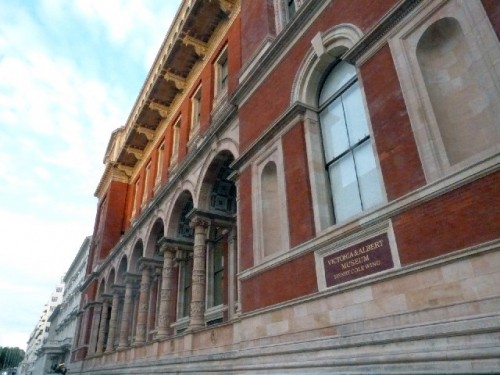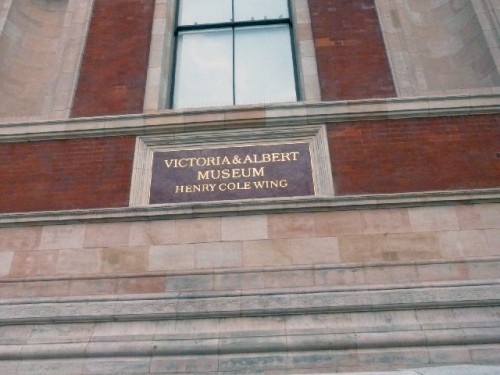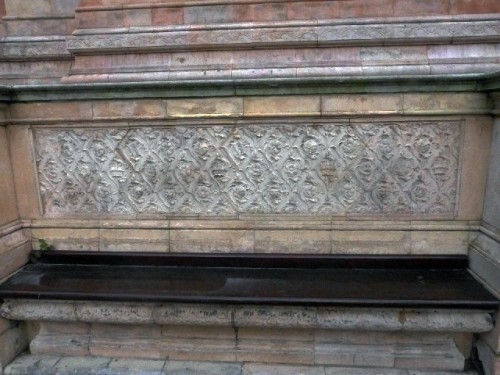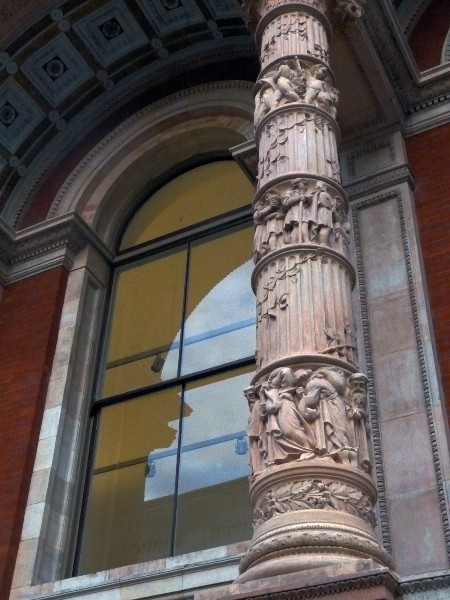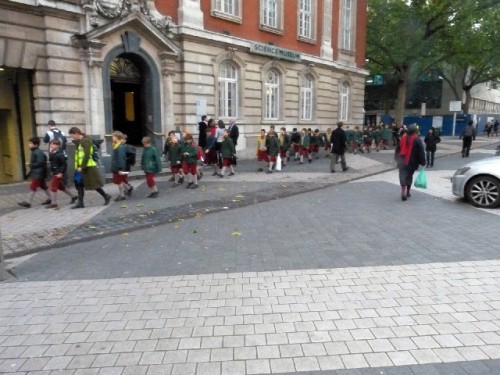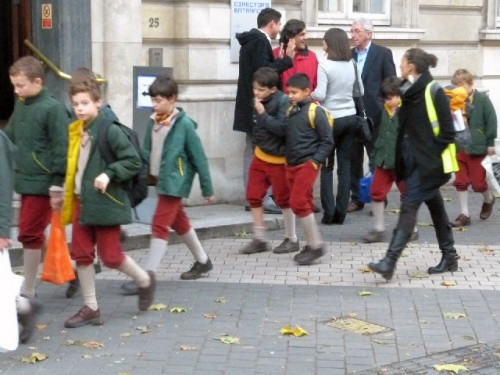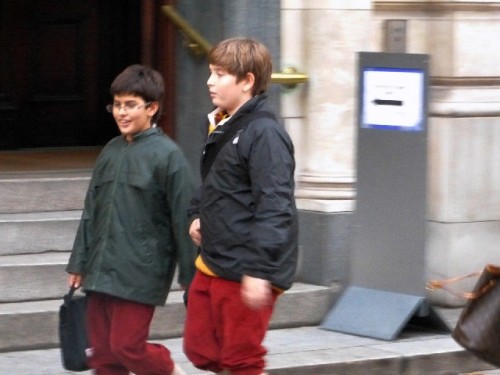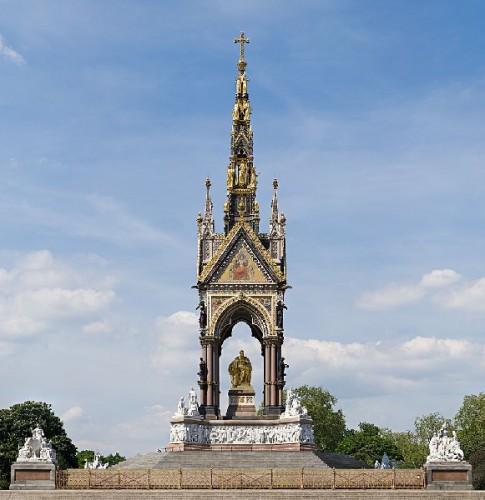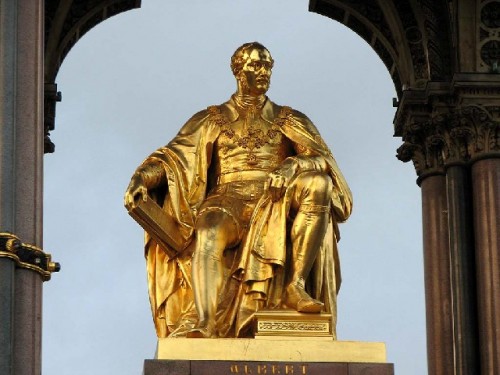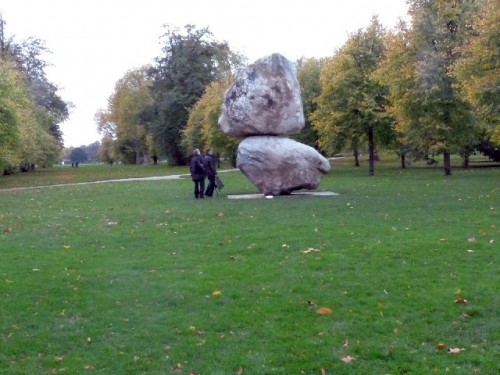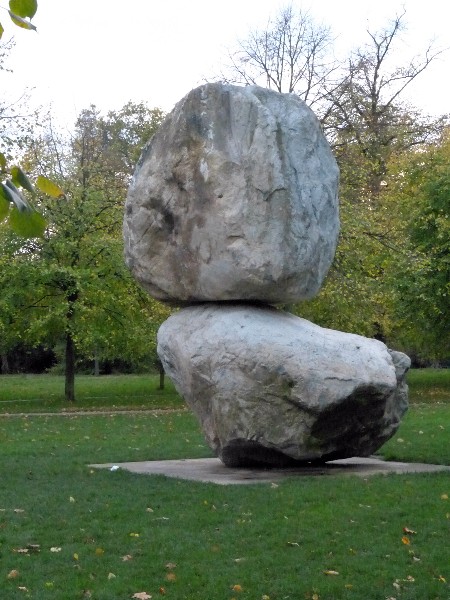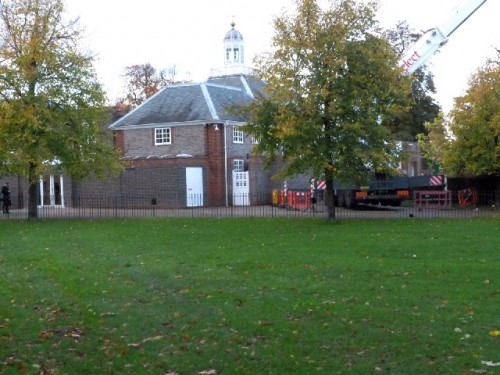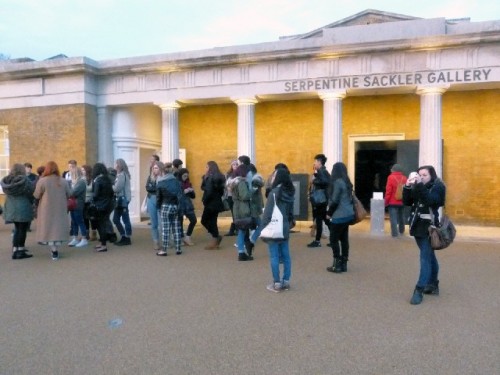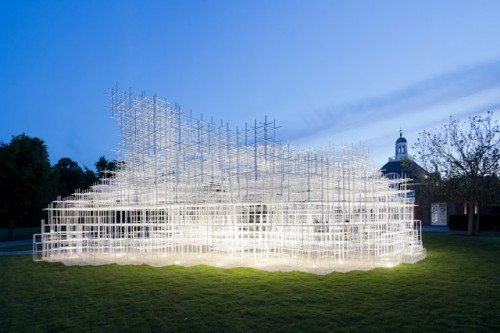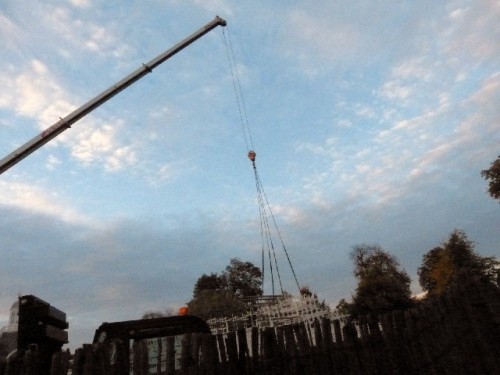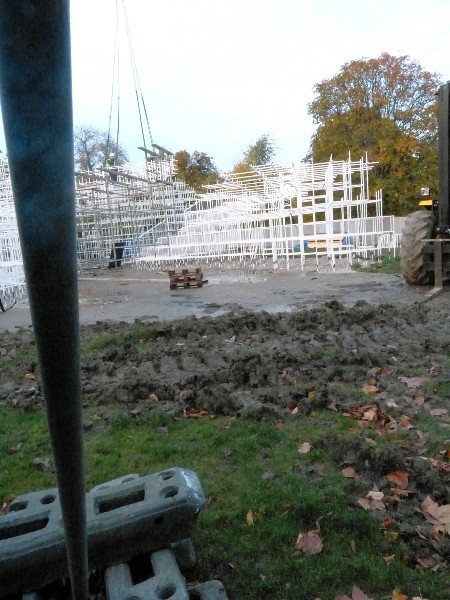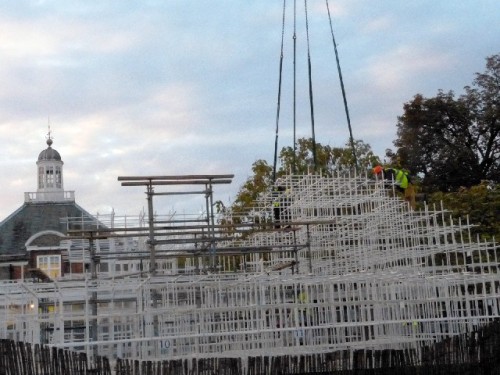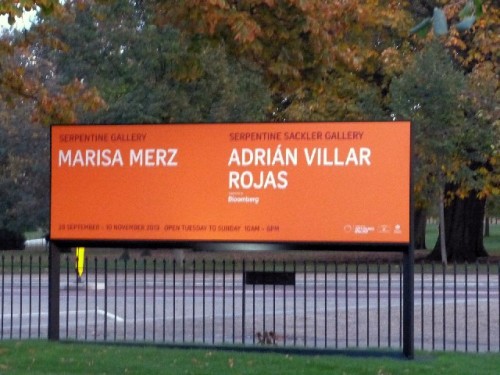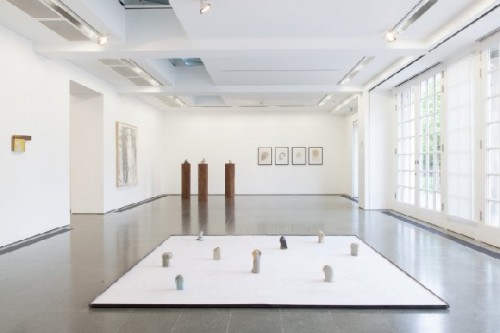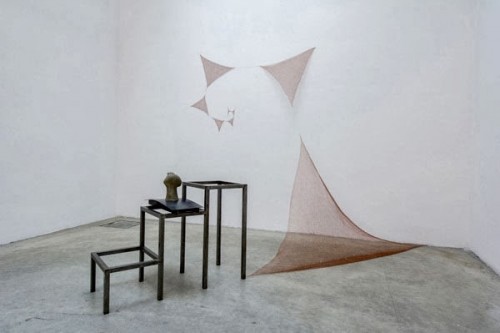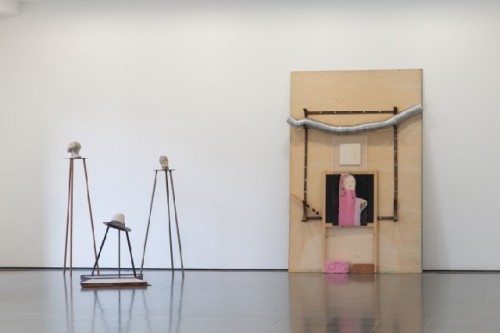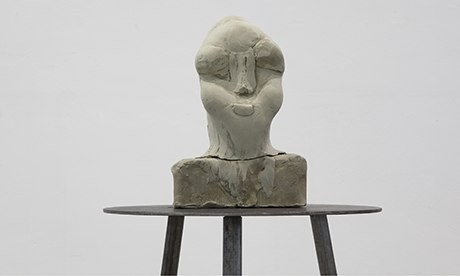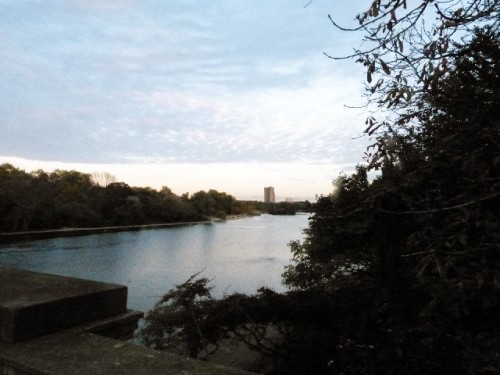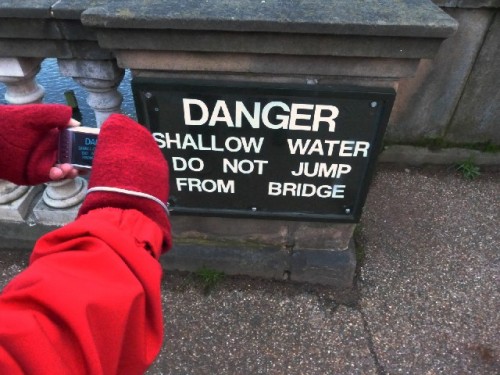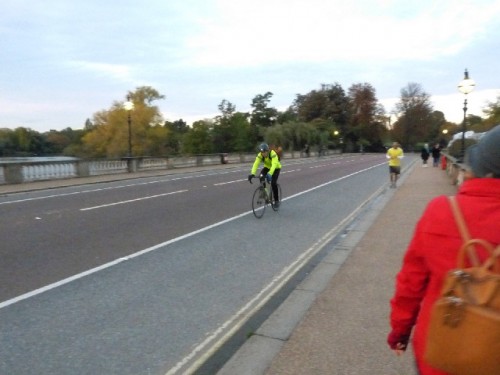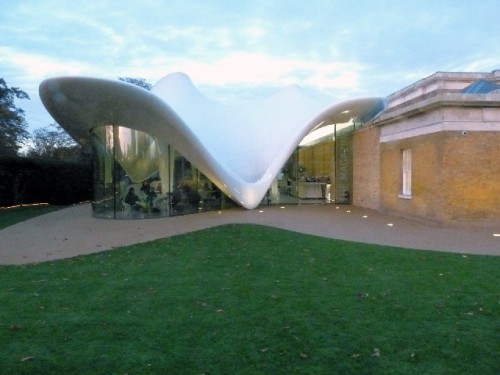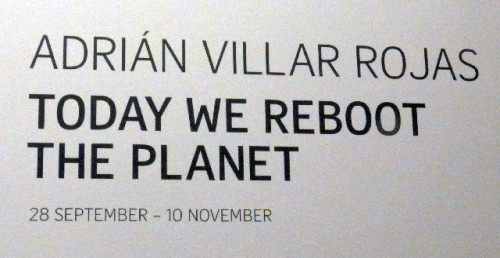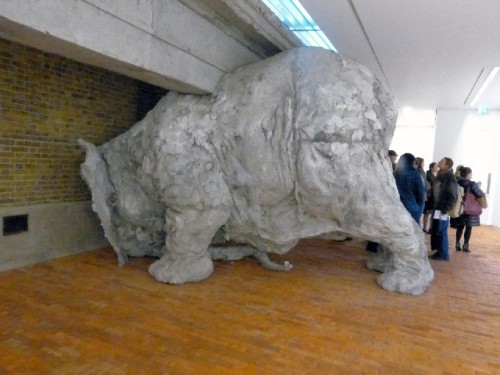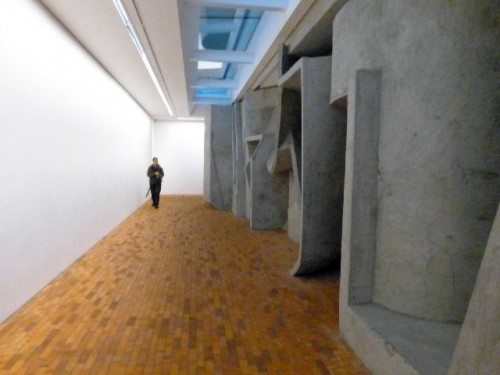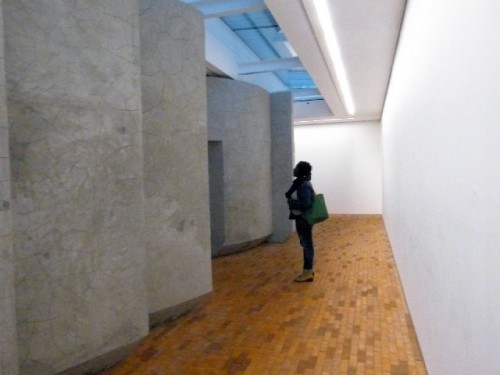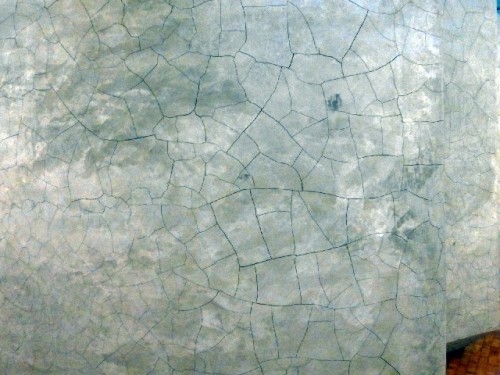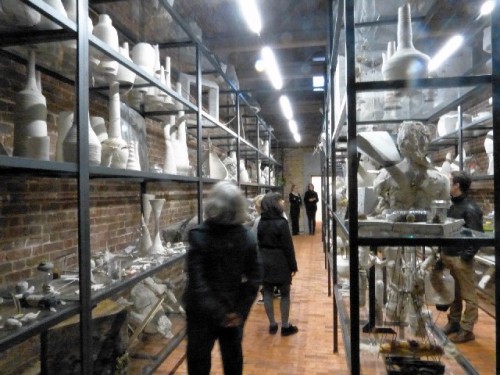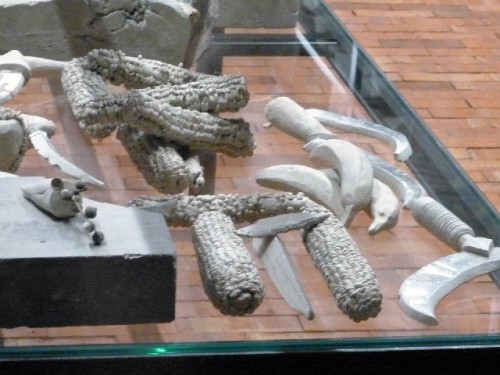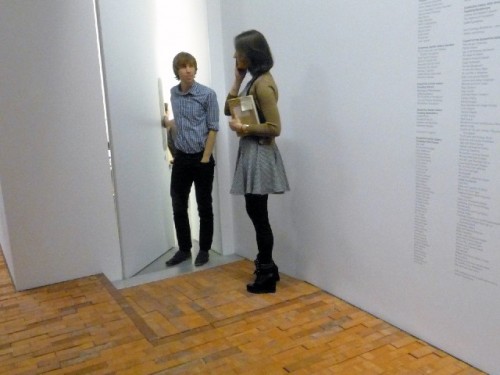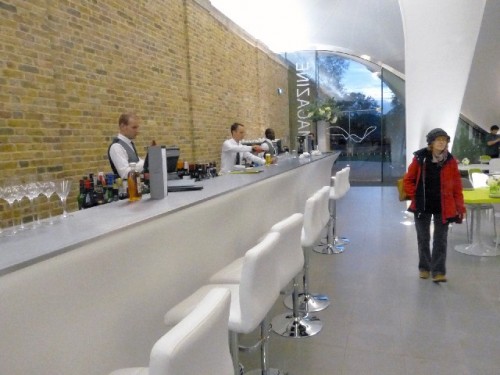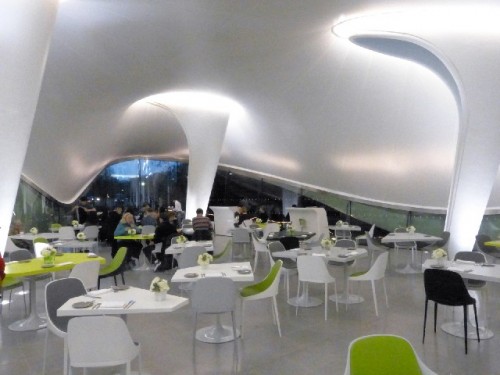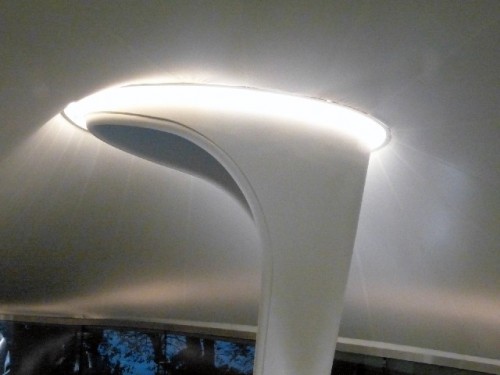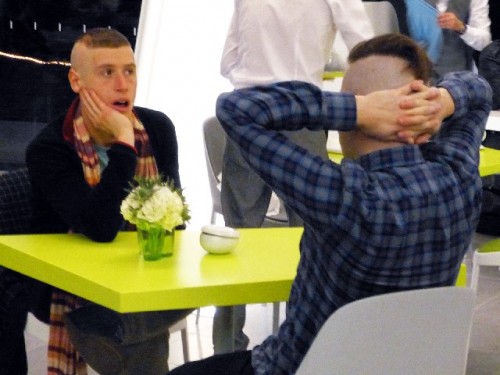London’s Serpentine Galleries
Arte Povere’s Marisa Merz and Argentine Adrian Villar Rojas
By: Charles Giuliano - Jan 08, 2014
London’s renowned Serpentine Gallery, established in 1970 in a classical 1934 former tea pavilion, features rotating exhibitions of generally a single artist in a relatively intimate space. In 2013 a companion venue designed by Zaha Hadid, Serpentine Sackler, opened a short walk deeper into the Kensington Gardens of Hyde Park. It is also a small building in the former Magazine which was built in 1805 to sell gunpowder.
While modest in scale, in terms of programming and prestige the Serpentine Gallery, now times two, is enormously influential.
During our last visit to London several years ago I visited the Serpentine while Astrid, then fatigued from a day at the nearby Victoria and Albert Museum, opted to return to the hotel prior to an evening of theatre.
She missed a fascinating exhibition of the German artist Blinky Palermo (2 June 1943 – 18 February 1977). A former student of conceptual artist Joseph Beuys he was born Peter Schwarze. A minimalist abstract artist and contrarian the work bore little resemblance to Beuys. Perhaps the greatest impact was inspiration for finding his own way. One of the most unique German artists of his generation, in a career truncated by addiction, Palermo adopted the name of an American gangster.
Frank "Blinky" Palermo (1905-1996) was an organized crime figure who surreptitiously owned prize-fighters. He was best known for fixing the Jake LaMotta-Billy Fox fight in 1947. An associate of a Philadelphia mob, Palermo also ran its numbers racket.
It’s a bit of a hike to reach the galleries. Basically, facing the V&A, one follows along the left of the building to the entrance of Hyde Park. On the left we passed the Prince Albert monument with the life-sized, seated consort of Queen Victoria apparently worth his weight in gold.
By now mid afternoon we set a brisk pace to take in both galleries.
Our first encounter was with a temporary sculpture Rock on Rock by the droll duo of Peter Fischli and David Weiss. The Serpentine is noted for elaborate temporary commissions. In early November they were in process of dismantling the white grid structure by Sou Fujimoto which seemed like a larger version of a work by minimalist Sol Lewitt. Through gaps in the fence we saw most but not all of the sculpture.
The Serpentine exhibition by Marisa Merz, the eighty something widow of the Italian, Arte Povere artist, Mario Merz, was respectable but not terribly exciting. She is the only female member of the movement and as such is being recognized. Her work won a Golden Lion at the Venice Biennale for lifetime achievement.
The installation of works from the 1960s to the present comprised a range of approaches from large paintings through small sculptures and cobweb like pieces in woven threads of metal. In sync with Arte Povere concepts the works entail generic materials and simplicity of approach. What sets her apart from the male members of the group is a sense of intimacy and whimsy. They draw us in and engage us more with a poetic whisper than a shout. Even given the modest scale of the pavilion the exhibition seemed a bit thin.
Having paid our respects we moved on. Let it be noted that Astrid appreciated Merz more than I did.
Having spent some time peeking through the fence at the Fujimoto we progressed to the next destination. That entailed a pleasant, late afternoon walk through the park. We paused and reflected from a bridge over the Serpentine Lake for which the gallery gets its name. There was a flood a joggers as well as a Bobbie on a Bike as we reached the new Serpentine Sackler.
Facing the building on its left side was a dramatic, curvy addition housing a café and restaurant by Zaha Hadid. We would take our afternoon tea in this interesting, upscale space which houses a fine restaurant.
While Hadid is regarded as an international leader in the field this tacked on curvaceous structure is a visual non sequitur for the classical building it adjoins. British critics have asked whether she was the right choice for the expansion. The addition makes a bold statement which will seem less so with time. It's rather like a Frank Gehry addition to Monticello. Where, perhaps, Robert A.M. Stern would be a better choice. There are in fact many distinguished architects capable of enhancing rather than disrupting an existing building in a different period and style. Consider, for example, how Lord Norman Foster blends in with the British Museum, The Museum Fine Arts Boston or the Reichstag.
In this instance the Hadid addition is either gimmicky and trendy or just atrocious.
It proved to be one of the final days of a fascinating installation by Adrian Villar Rojas.
Since it entirely filled the space, with a curved and segmented wall around a couple of central galleries, it was disorienting to sense the dimensions of the experience. With brilliant humor Rojas plays on that in a first encounter with the installation.
There was a life sized elephant pushing up against the wall. Doing exactly what was not clear.
Immediately, we noted that the entire floor of the gallery was covered with loose bricks. They clanked and moved around a bit as we walked over them.
Making our way around we found the core of the design. From one end we peered into what resembled a storage room with rows of metal shelves. On these were countless small works in unfired clay. Some were modeled while others appeared to be cast. We focused on some ears of corn and elements of figures.
With so much unfired clay and mud there was a pervasive earthy odor that was pleasant and soothing. The stucco like material was smeared over all of the walls. On close inspection we studied the fine cracking of the drying process.
The entire mad inventory was fragile and ephemeral. It was a bit staggering to consider such an incredible effort to make all of that work that remained unfired and easily broken. Imagine packing it all up for shipment back to the studio in Argentina.
It was utterly and delightfully mad as a hatter.
During our time in the space, which was considerable, there was a group of art students with their professor engaging in a chin wag. It seemed odd that they camped out in a corner behind the wall and never moved. They weren’t looking at the work they were talking about. I listened in on the discourse for possible pearls of wisdom. But decided that student crits are pretty much the same no matter where you are.
Then as I mentioned we had tea. Which was quite lovely.
Followed by a half hour hike back to the tube in the dark. Then dinner and theatre that night.
The current offerings include the first major London exhibition of the Egyptian artist Wael Shawky. It navigates the territory between truth and myth in the Serpentine Gallery. Morality, the history of art and consumer culture, loom large in Jake and Dinos Chapman's new show at Serpentine Sackler. Both exhibitions run through February 9, 2014.


